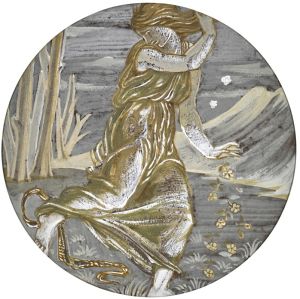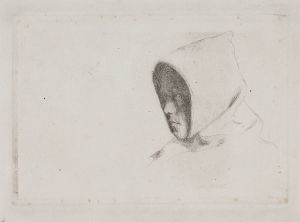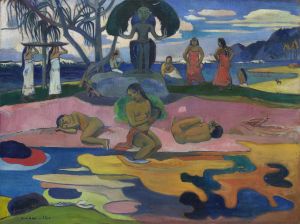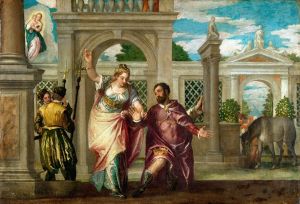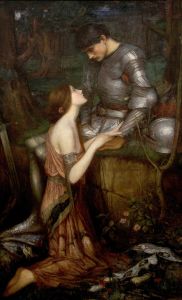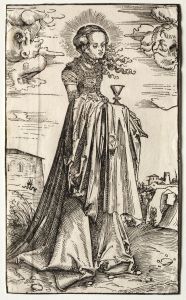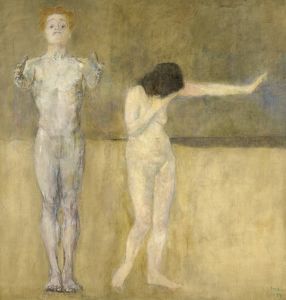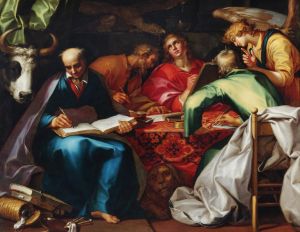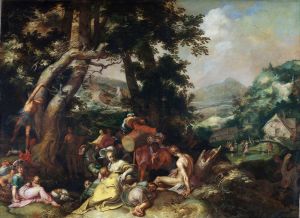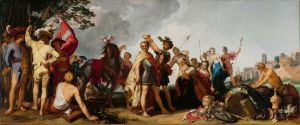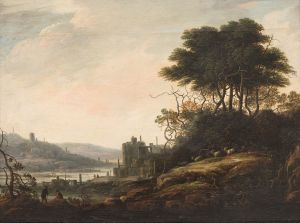
Roman Soldiers Stoning a Serpent
A hand-painted replica of Abraham Bloemaert’s masterpiece Roman Soldiers Stoning a Serpent, meticulously crafted by professional artists to capture the true essence of the original. Each piece is created with museum-quality canvas and rare mineral pigments, carefully painted by experienced artists with delicate brushstrokes and rich, layered colors to perfectly recreate the texture of the original artwork. Unlike machine-printed reproductions, this hand-painted version brings the painting to life, infused with the artist’s emotions and skill in every stroke. Whether for personal collection or home decoration, it instantly elevates the artistic atmosphere of any space.
"Roman Soldiers Stoning a Serpent" is a painting created by the Dutch artist Abraham Bloemaert. Bloemaert was born in 1566 in Gorinchem, Netherlands, and he became one of the most prominent painters and printmakers of the Dutch Golden Age. He was known for his versatility in various styles and subjects, including religious themes, mythological scenes, and landscapes.
The painting "Roman Soldiers Stoning a Serpent" depicts a dramatic and dynamic scene where Roman soldiers are attacking a large serpent with stones. The composition is characterized by its intense action and the vivid portrayal of the figures involved in the scene. Bloemaert's use of light and shadow, as well as his attention to detail, are evident in the rendering of the soldiers' muscular forms and the serpent's sinuous body.
Abraham Bloemaert was a master of chiaroscuro, a technique that uses strong contrasts between light and dark to create a sense of volume and three-dimensionality. This technique is effectively employed in "Roman Soldiers Stoning a Serpent" to enhance the drama and tension of the scene. The painting also reflects Bloemaert's skill in capturing movement and emotion, as seen in the determined expressions of the soldiers and the writhing motion of the serpent.
Bloemaert was a significant figure in the Utrecht Caravaggisti movement, which was influenced by the works of the Italian painter Caravaggio. The Utrecht Caravaggisti were known for their realistic depictions of human figures and their use of dramatic lighting. Although "Roman Soldiers Stoning a Serpent" does not directly emulate Caravaggio's style, it shows Bloemaert's ability to incorporate elements of realism and dramatic intensity into his work.
Throughout his career, Bloemaert trained many pupils who went on to become notable artists in their own right. His influence extended beyond his own works, contributing to the development of Dutch art in the 17th century. Some of his most famous students included Gerrit van Honthorst, Hendrick ter Brugghen, and Jan Both.
"Roman Soldiers Stoning a Serpent" is an example of Bloemaert's ability to blend classical themes with his own artistic vision. The painting is a testament to his skill in composition, his mastery of light and shadow, and his ability to convey dynamic action and emotion. It remains an important work within the context of Dutch Golden Age painting and highlights Bloemaert's contribution to the art of his time.
The painting is part of the collection of the Rijksmuseum in Amsterdam, which houses a significant number of works by Bloemaert and other Dutch masters. The Rijksmuseum is renowned for its extensive collection of art and historical artifacts, providing valuable insights into the cultural heritage of the Netherlands.
In summary, "Roman Soldiers Stoning a Serpent" by Abraham Bloemaert is a notable example of Dutch Golden Age painting, showcasing the artist's technical prowess and his ability to depict dramatic scenes with emotional intensity. The painting continues to be appreciated for its artistic merit and historical significance.





